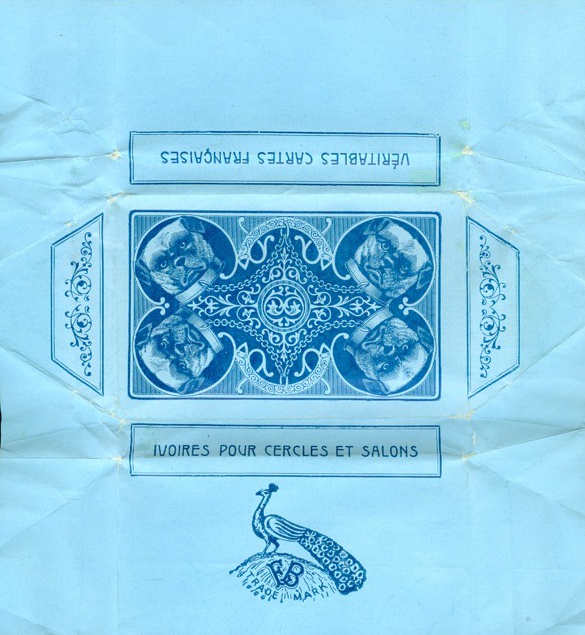|
A SWISS FAMILY |
||||
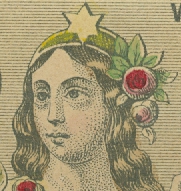 |
|
|
||
|
grandmother |
mother |
daughter |
||
May 2017
|
A SWISS FAMILY |
||||
 |
|
|
||
|
grandmother |
mother |
daughter |
||
It was a very
slow month on eBay for us and the consequence of that was that we had to scrape
the bottom of our playing cards money chest. But we managed to get a few new
decks for our collection. One of the buys from eBay was from a seller who didn't
offer international shipping. We had found a US friend willing to act as
intermediary and had already paid for shipping within the US, but then the
seller told us that eBay didn't allow him to chance country in their shipping
program. So some extra shipping was paid, but the delay had gone up to almost a
week by then and we anticipated that the deck would probably not arrive in time
to enter this month's competition. It would definitely have been a winner, but
now we had to choose between the other decks.
This Deck of the Month came from a Dutch auction site. We had recognized
the pattern immediately. It's known as "Cartes Suisses" (Swiss Cards).
We already had 2 versions of this pattern, an antique and a modern one, and we
were attracted to this new deck, because it seems to date from the middle of the
period that separates them. The antique one probably dates from 1870/80 and the
modern one is from around 1960. The seller of our addition had advertised the
deck as being from around 1920 and made by Etabl. Brepols NV from Turnhout.
|
We'll only show a few cards from the other decks for comparison. If you want to see the complete antique deck: it was our Deck of the Month 04/2009, easy to find through the header above. We still haven't been able to attribute it to a specific maker, as we haven't seen a similar designed deck in our reference books. The documented Belgian versions all have slightly different designs. But we'll keep searching the net. |
||
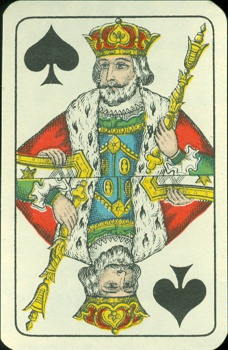 |
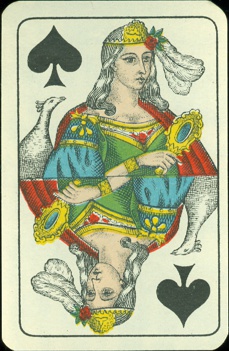 |
 |
|
Only in the antique decks the Queens have the names of goddesses from the Roman mythology. The Kings and Jacks were nameless. In later editions, such as this, the names of the goddesses have also disappeared. The QS here above represents Juno, the divine protectress of the community and the Roman state. Often depicted together with a peacock. |
||
|
Flora is the QH, a goddess of flowers and spring and of course here she wears flowers in her hair and holds a wrath of flowers in one hand. |
||
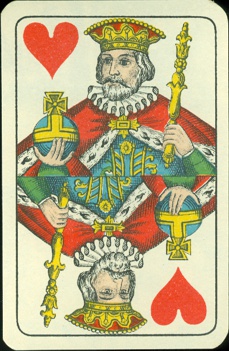 |
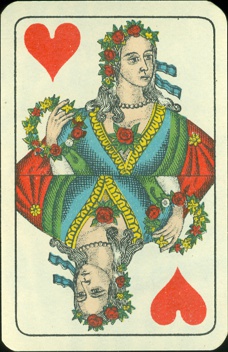 |
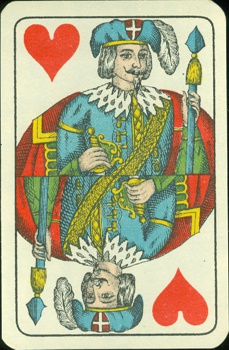 |
In
Belgium the
pattern was called "Swiss Cards" because it was usually accompanied by
a set of aces with Swiss scenes. However......
none of our three decks has illustrated aces.
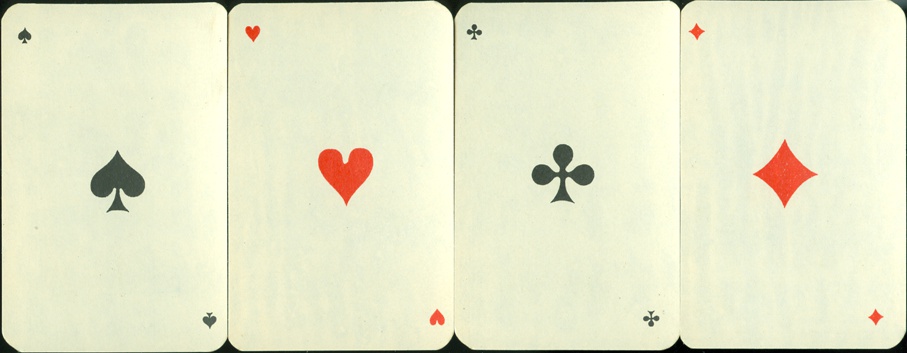
Here below another trinity........
|
|
Diana is the Roman goddess of the hunt and of the moon. These two elements are represented. The bow and arrow are obvious references, just like the crescent shape on her head. Her hunting dog seems to connect the two, as he seems to be gazing at the moon, ready to start howling. |
|
Venus is the QD. She's the goddess of love and beauty, but also of prosperity and victory. She's presented here with a swan (symbol of beauty) and an arrow (of victory). |
||
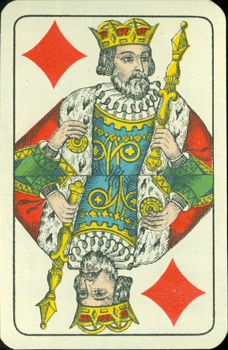 |
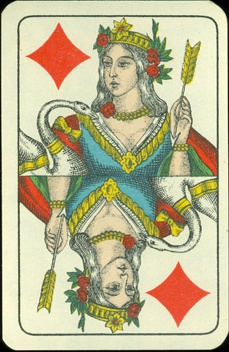 |
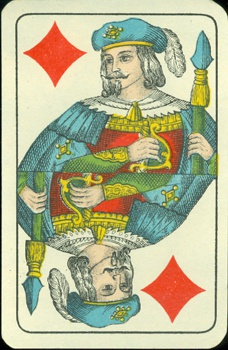 |
All the pip cards
are numbered in 2 suit signs. The deck can be used for the Swiss game of Jass,
which requires 36 cards.
Numbers in the suit signs is often used in Swiss made decks. It's possible that
the Brepols made these decks for export to Switzerland.
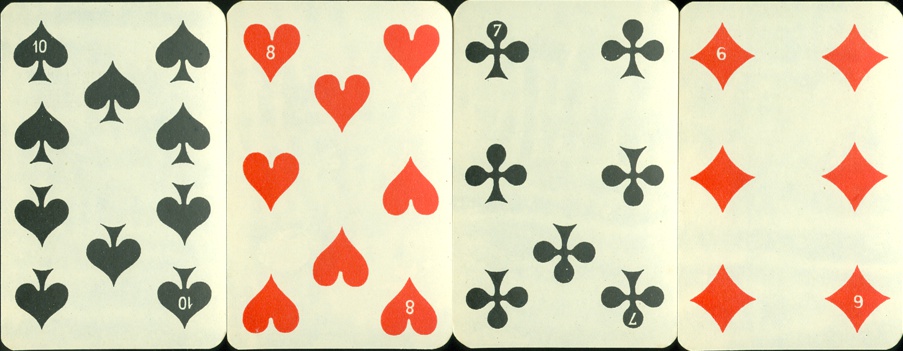
Although it fits
like a glove, the deck came in a wrapper, that suggests a different
back design than that of the actual cards.
But the deck is described in Autenboer/Cremers 1 as coming in a wrapper with the
same text as this wrapper has.
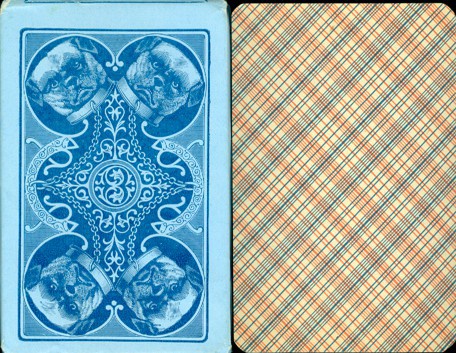
We too have seen this same kind of wrapper used for other decks with different backs.
